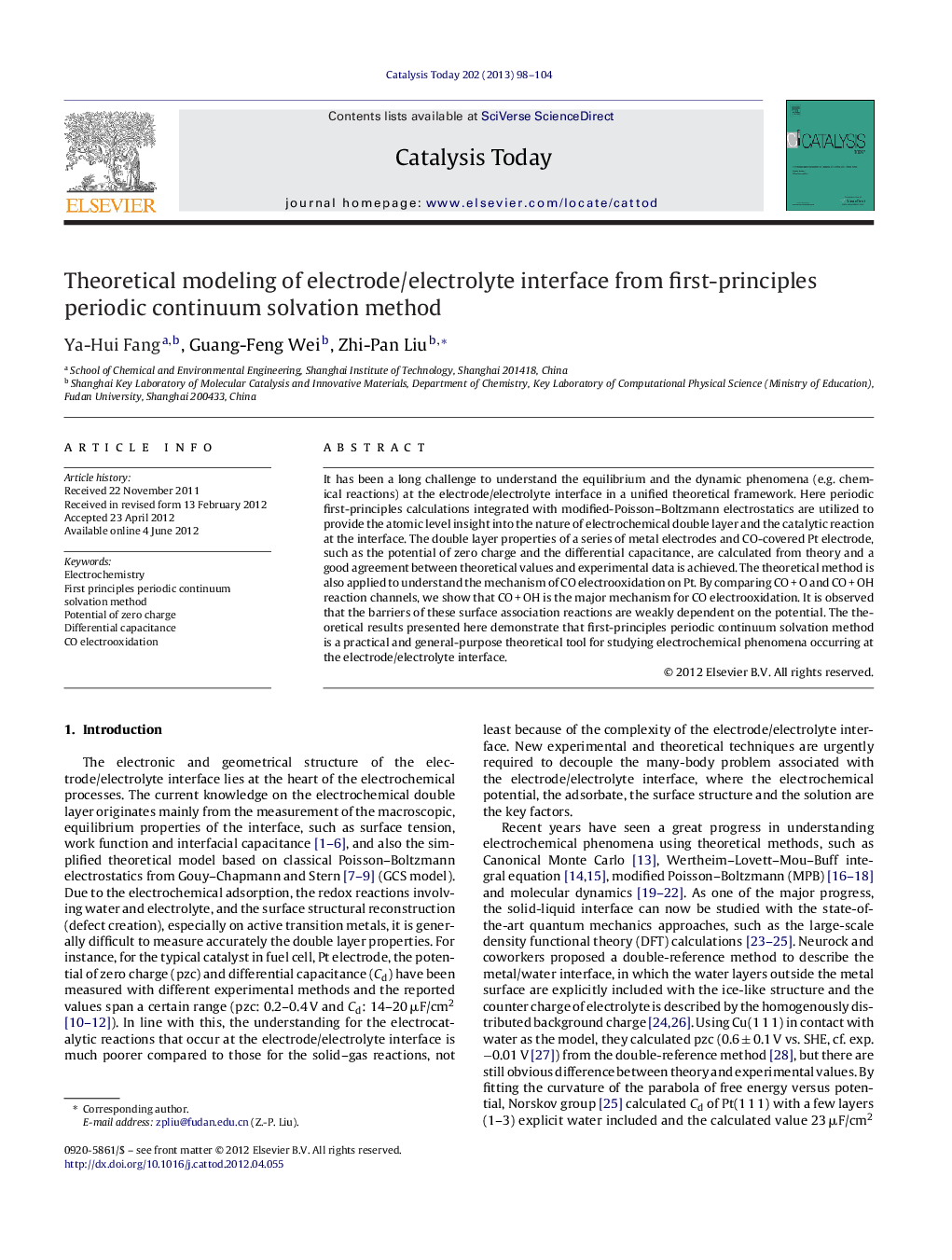| کد مقاله | کد نشریه | سال انتشار | مقاله انگلیسی | نسخه تمام متن |
|---|---|---|---|---|
| 55001 | 47036 | 2013 | 7 صفحه PDF | دانلود رایگان |

It has been a long challenge to understand the equilibrium and the dynamic phenomena (e.g. chemical reactions) at the electrode/electrolyte interface in a unified theoretical framework. Here periodic first-principles calculations integrated with modified-Poisson–Boltzmann electrostatics are utilized to provide the atomic level insight into the nature of electrochemical double layer and the catalytic reaction at the interface. The double layer properties of a series of metal electrodes and CO-covered Pt electrode, such as the potential of zero charge and the differential capacitance, are calculated from theory and a good agreement between theoretical values and experimental data is achieved. The theoretical method is also applied to understand the mechanism of CO electrooxidation on Pt. By comparing CO + O and CO + OH reaction channels, we show that CO + OH is the major mechanism for CO electrooxidation. It is observed that the barriers of these surface association reactions are weakly dependent on the potential. The theoretical results presented here demonstrate that first-principles periodic continuum solvation method is a practical and general-purpose theoretical tool for studying electrochemical phenomena occurring at the electrode/electrolyte interface.
Figure optionsDownload high-quality image (294 K)Download as PowerPoint slideHighlights
► We implement modified-Poisson–Boltzmann electrostatics in periodic first-principles calculation for studying electrochemistry.
► We calculate the potential of zero charge and differential capacitance of several metal and CO-covered Pt surfaces.
► The CO coupling with OH is the major channel for CO electrooxidation.
► The reaction barrier of surface association reactions is not sensitive to potential change.
Journal: Catalysis Today - Volume 202, 15 March 2013, Pages 98–104